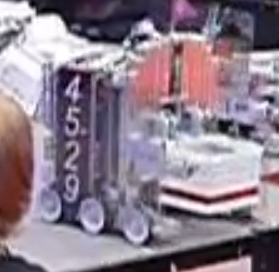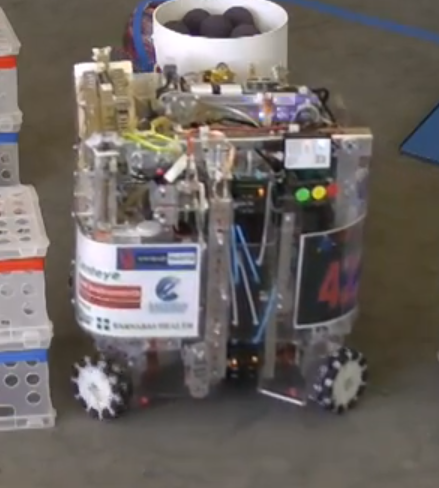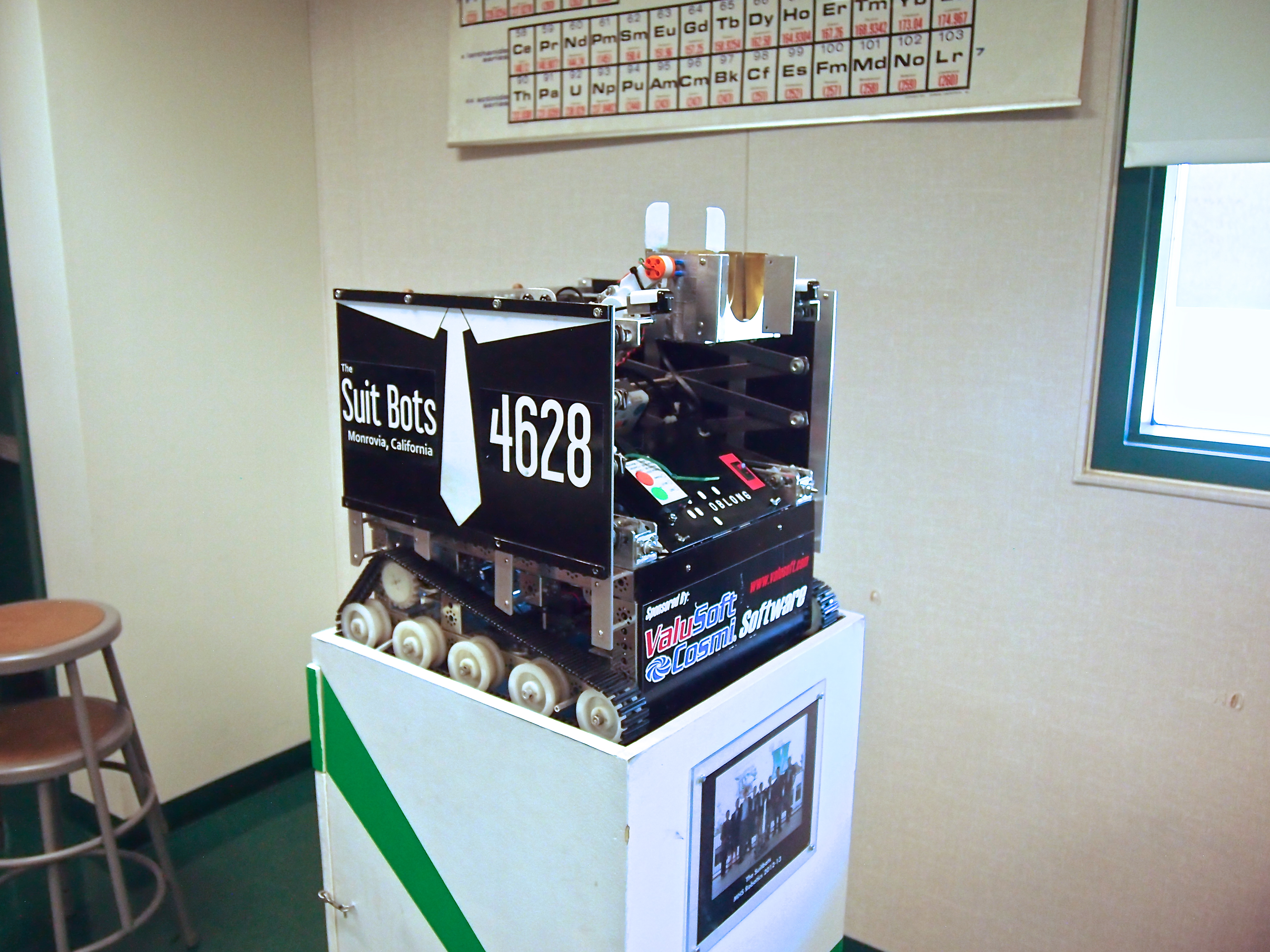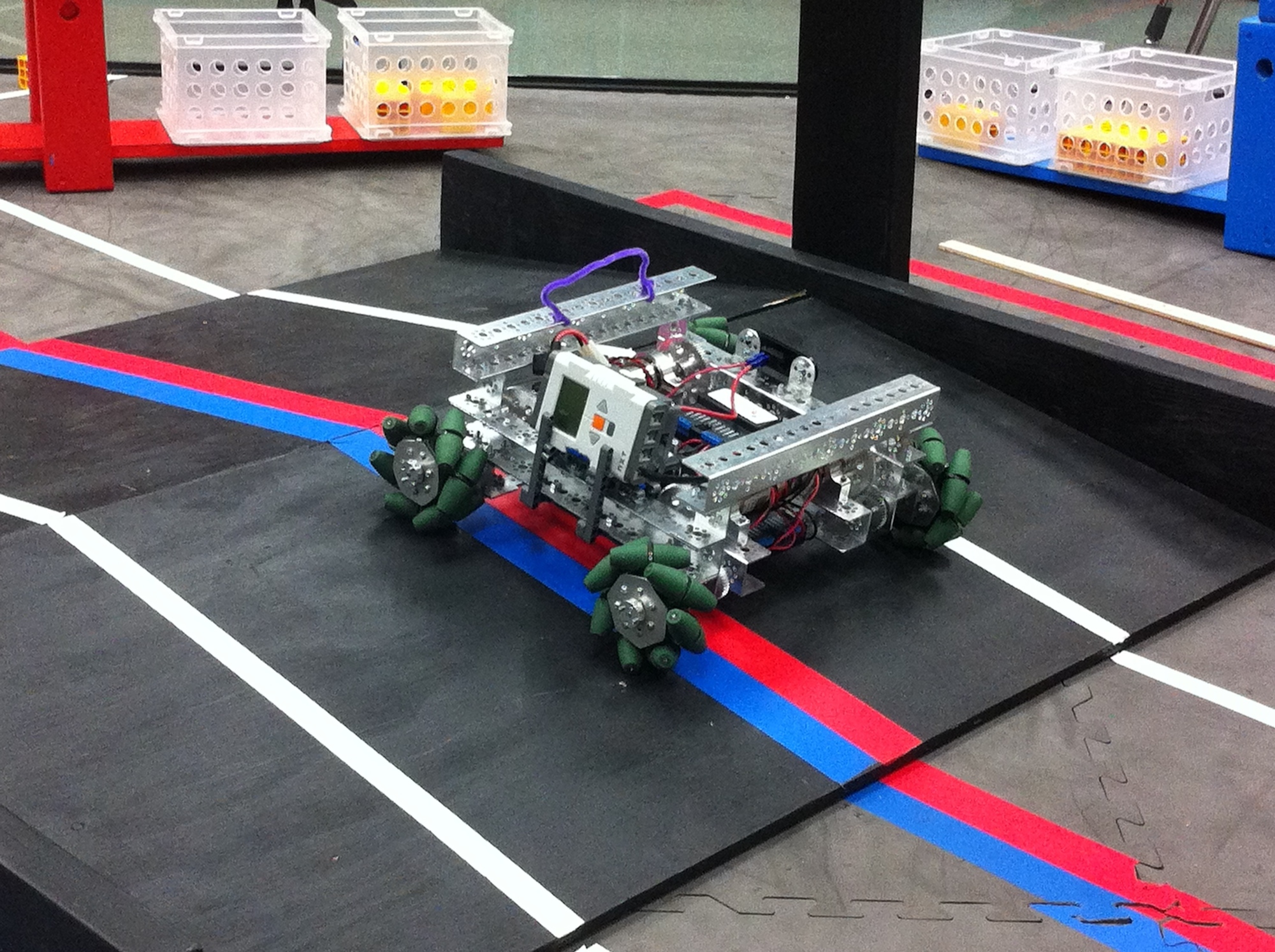For a while, FTC Teams have been using one of two drive trains: traction drive (there are several of these, but they’re all the same idea) and holonomic drive. Traction drive gives you speed and ability to drive over things, while holonomic gives you huge maneuverability by allowing movement in any direction.



But lets focus on the uncommon drive trains, since this year, according to rule o, you can use any wheels you want so long as they’re less than 4″ in diameter.
Tank Treads
There is tank treads, which are nothing new to FTC, but so few teams use them, I feel it necessary to refer to them as “uncommon”. They’re the most grippy things you can get for driving on the foam tiles because of how much area your robot’s weight is distributed on, but they don’t grip at all on the wooden field elements due to the fact they’re made of plastic. You can remedy that with rubber inserts on the treads, but depending on how heavy your robot is (for example, our 50 lb bot from last year), it can hinder you when your on the foam tiles. By our estimate, if you have a small or medium sized bot (small < 25 lbs, medium < 35 lbs), rubber inserts are okay (although this year, they’re not very necessary, since plain treads will park on the bridge on their own).


Swerve/Crab Drive
You saw a picture of it above, it’s a drive train that combines the maneuverability of holonomic drive with the grippiness of a traction drive. The only downsides to it are the cost of the components, the mechanical complexity, and the software complexity. We spoke to the team that built the bot above, and they said that each wheel had a pair of bevel gears associated with it. One pair of bevel gears costs $30, times four makes more than $120 for the whole drive train. They also had a whole mess of chains and sprockets, which aren’t cheep either.
The drive train also uses a whole bunch of parts. According to Murphy’s law, that means that you’ll have to be fixing you drive train a lot.
The software isn’t awful, though. If you figure out how to write the function once, you’ll never have to write it again, although that first time is likely difficult.
But with all its downfalls, swerve drive, in terms of maneuverability, is actually better than holonomic drive. It changes direction faster and won’t slip and go in the wrong direction.
Mecanum Drive
FTC has never really used this one. It hasn’t been legal to use, since wheels are a new COTS for this for this year. Mecanum wheels are a lot the same as omni wheels; they allow for movement in any direction and they don’t get a lot of traction. Their advantages over omni wheels are that they use more motor power, so they go faster, it’s easier to make them move in a straight line, and they climb over obstacles easier than omni-wheels (assuming you’re not trying to climb them sideways, in which case they simply cannot).

It should also be noted that because Tetrix does not make mecanum wheels, there aren’t wheels that easily attach to the Tetrix kit of parts. We had to drill out holes in the wheels and make custom hub caps to attach ours.
